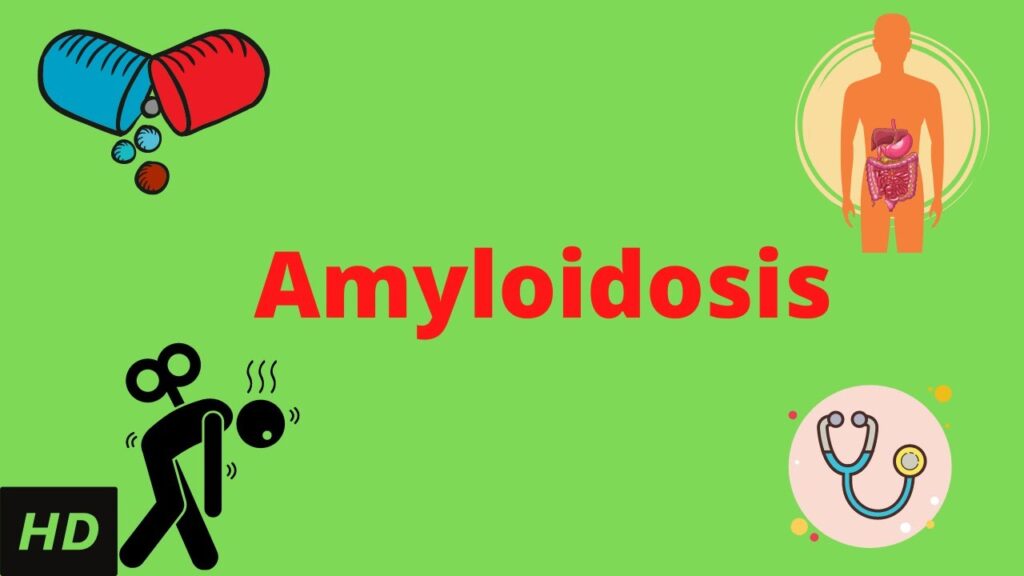Amyloidosis is a rare but potentially serious condition in which abnormal proteins called amyloids build up in the organs and tissues, interfering with their normal function. This accumulation can lead to damage in various parts of the body, including the heart, kidneys, liver, and nervous system. Given the complexity of amyloidosis, it is crucial for patients to be diagnosed early and receive appropriate treatment to manage the condition and minimize complications.
What is Amyloidosis?
Amyloidosis refers to a group of diseases caused by the deposition of amyloid proteins in tissues and organs. These amyloid deposits disrupt the normal functioning of the affected organs and can lead to severe damage. The condition is categorized based on the type of amyloid protein involved and the organs affected.
There are several types of amyloidosis, but the most common include:
- AL Amyloidosis (Primary): This is the most prevalent form, caused by abnormal plasma cells in the bone marrow that produce abnormal light chain proteins.
- AA Amyloidosis (Secondary): Typically a result of chronic inflammatory diseases, such as rheumatoid arthritis or inflammatory bowel disease.
- Hereditary Amyloidosis: This genetic form of the disease is passed down from parent to child and often affects specific organs such as the heart, kidneys, and nerves.
- Wild-Type Transthyretin Amyloidosis (ATTRwt): This occurs when a protein called transthyretin (TTR), normally produced in the liver, forms amyloid deposits due to misfolding.
- Dialysis-Related Amyloidosis: This form is typically seen in individuals on long-term dialysis, as the kidneys are unable to properly filter out certain proteins.
Each type of amyloidosis affects the body in different ways, but they all share the common characteristic of amyloid deposits interfering with normal organ function.
Symptoms of Amyloidosis
The symptoms of amyloidosis depend on the organs affected and the extent of amyloid deposition. In many cases, the symptoms can be vague or mimic those of other conditions, making early diagnosis challenging. Common signs of amyloidosis may include:
- Fatigue: One of the most common symptoms of amyloidosis, resulting from the body’s decreased ability to function normally.
- Swelling: Fluid buildup can lead to swelling, especially in the legs, ankles, or abdomen.
- Unexplained weight loss: As the disease progresses, patients may experience unintended weight loss.
- Shortness of breath: If the heart is affected, amyloidosis can lead to heart failure, resulting in breathing difficulties.
- Numbness or tingling: In cases where the nervous system is involved, amyloidosis can cause peripheral neuropathy, leading to tingling, numbness, or weakness in the extremities.
- Bruising easily: The skin can become more fragile and prone to bruising.
- Enlarged organs: In some cases, the liver, spleen, or kidneys may become enlarged, leading to additional symptoms such as pain or discomfort.
Given that the symptoms can be subtle or mimic other conditions, it is crucial for individuals to consult a healthcare provider if they experience any of the above symptoms.
Diagnosis of Amyloidosis
Diagnosing amyloidosis often involves a combination of clinical evaluation, laboratory tests, and imaging studies. The following diagnostic methods are commonly used:
- Biopsy: A tissue biopsy is one of the most effective ways to diagnose amyloidosis. A sample of tissue from an affected organ, such as the kidney or heart, is examined under a microscope to detect amyloid deposits.
- Blood and urine tests: These tests can detect abnormal proteins, such as light chains, that are indicative of amyloidosis.
- Imaging studies: X-rays, MRIs, or echocardiograms may be used to assess the extent of organ damage, particularly if the heart or kidneys are involved.
- Genetic testing: In cases of hereditary amyloidosis, genetic testing can help identify mutations in the TTR gene.
Treatment Options for Amyloidosis
Although amyloidosis is a serious condition, there are treatment options available that can help manage the disease and improve quality of life. The treatment plan will depend on the type of amyloidosis, the organs affected, and the severity of the condition. Common treatment approaches include:
1. Chemotherapy
In cases of AL amyloidosis, chemotherapy may be used to target and destroy the abnormal plasma cells that are producing amyloid proteins. The goal is to reduce the production of these harmful proteins and prevent further deposition in organs.
2. Immunotherapy
For patients with AL amyloidosis, immunotherapy drugs, such as monoclonal antibodies, can help stop the production of the abnormal light chain proteins.
3. Organ Transplantation
In severe cases where organ damage is irreversible, a transplant may be necessary. Kidney transplantation is the most common organ transplant for patients with amyloidosis, but heart, liver, or bone marrow transplants may also be options.
4. Supportive Care
Supportive care is essential in managing the symptoms and improving the quality of life for patients with amyloidosis. This may include:
- Diuretics to reduce swelling.
- Medications for heart failure if the heart is affected.
- Pain management for neuropathic symptoms.
5. TTR Stabilizers
For ATTR amyloidosis, medications such as tafamidis can help stabilize the transthyretin protein and prevent it from misfolding into amyloid deposits.
Conclusion
Amyloidosis is a complex and rare condition that can affect various organs and lead to significant health complications. Early diagnosis and treatment are key to managing the disease and improving outcomes. If you suspect you may have amyloidosis, it’s important to seek medical attention promptly for proper testing and treatment options.
While amyloidosis is a serious condition, advancements in medical research have led to improved therapies, and with appropriate care, many patients can experience better quality of life.


